Ryan “ShwizZ” Liatsis is the guitarist and frontman of the power rock trio ShwizZ. A well-respected group in the scene, ShwizZ is a 3 member group who are incredible at their respective instruments, and perform a wide range of progressive rock music. Ryan uses a fairly unique rig compared to other players on the scene, using a digital modeling pedalboard rather than analog pedals, and utilizing a MIDI-trigger board to play chords for added textures during his songs. Check out ShwizZ’s performance from Disc Jam this past June, footage courtesy of mkDevo.
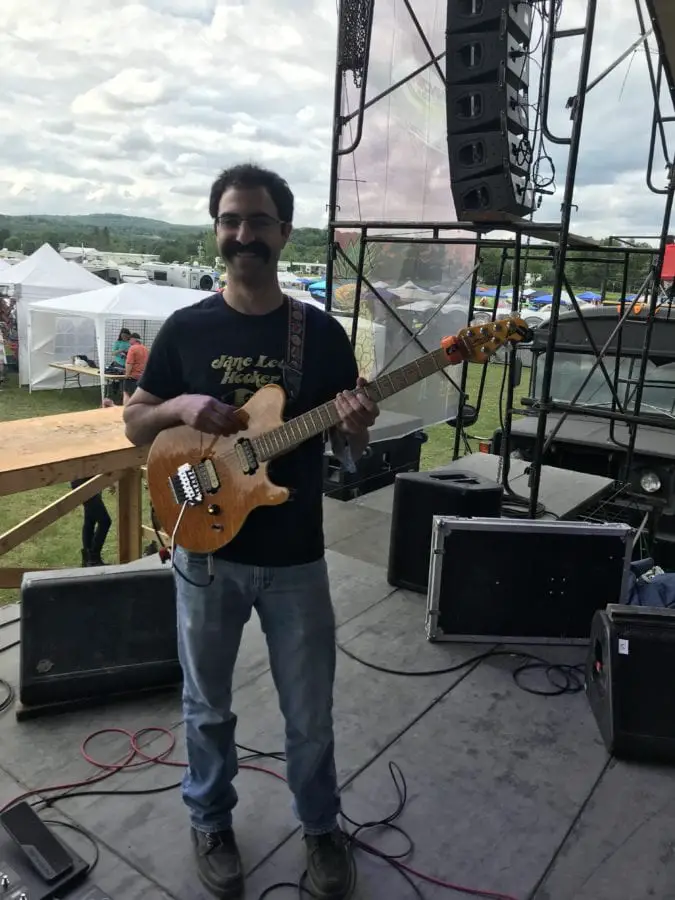
Guitar: Music Man EVH Wolfgang Special
Amp Head: Mesa/Boogie Express 5:50 Plus Cab: Mesa/Boogie Widebody 1×12 Pedalboard HeadRush Pedalboard w/ Boss Expression Pedal Keith McMillan Instruments SoftStep 2
Keyboard Korg Krome Music Workstation w/ sustain pedal
Jared Lindquist: Why do you put your amp head under your cabinet?
Ryan Liatsis: This just made the most logical sense when I got the amp, though I do like to think of it as my signature move! I like when the speaker is as close to ear level as possible so you can hear what is actually being captured by the mic and therefore EQ better for the stage. That and for my particular amp (Mesa Express 5:50) the head was heavier than the cab, so it just felt right to put the heavier piece on the bottom.
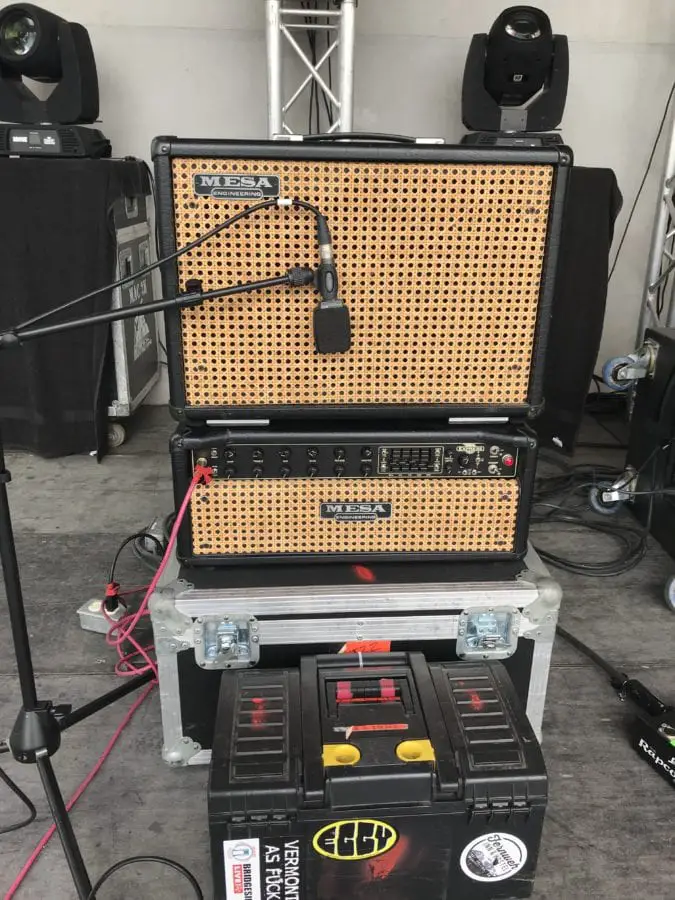
JL: When did you make the switch to the modeling pedalboard?
RL: Very recently! It’s been about 2 months with the modeler and I’m a big fan. I’m currently using the Headrush FX pedalboard. I am completely happy with the tone of the overdrives and distortions as that is extremely important to me. The switch over to the modeler has just made life easy on stage with being able to switch patches with one button and digital storage. Having a gate on the input and EQ section on the master output is extremely helpful too. The best method I’ve found is to get rid of all the speaker cabinet models on your patches. I just use the FX and occasionally the amp head models right in to the front of my amp. I haven’t tried it using the xlr outs to a PA speaker, though I imagine that’s where the speaker cabs would come in handy. This past year has seen a huge leap with amp modeler technology and I wouldn’t be surprised to see more and more pro players using them.
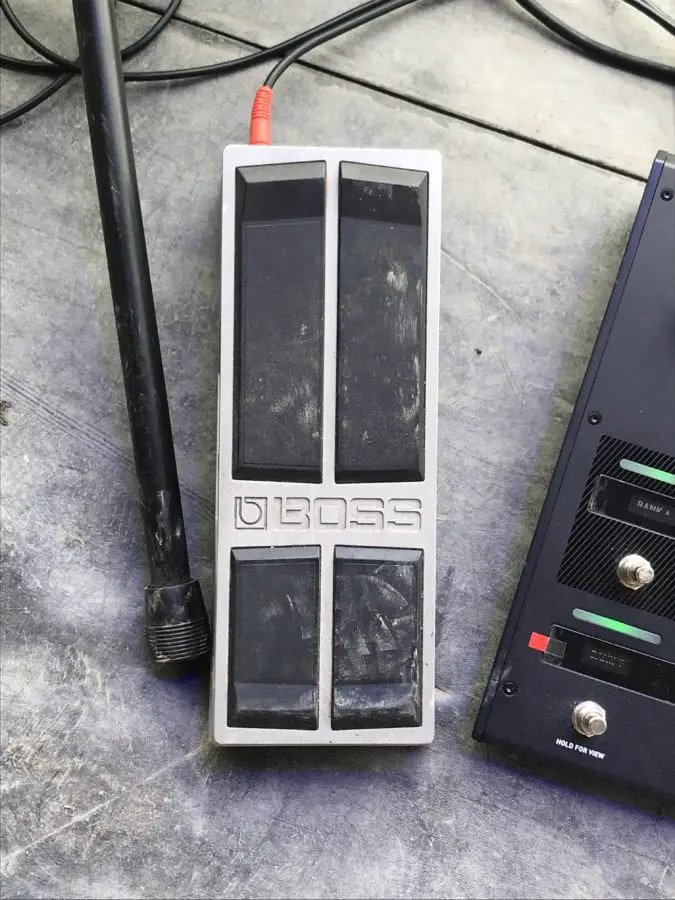
JL: Did you model the effects after your analog pedals?
RL: I tried as best as I could, though I wasn’t exactly going for that. I think that every piece of gear just has its own flavor and you should put that to use. So instead of trying to recreate my boutique analog pedals, I decided to just see if I could get tones I like and was comfortable with out of the Headrush. Which, much to my surprise, I did! It seems about every 2-3 years I decide I want to change my tone to better fit my needs. I’m sure some new product will catch my eye a few years from now and I’ll adapt to what it has to offer. It’s a lifelong quest and I don’t think there’s an end, just a journey of different sounds and tones. Tone has a lot to do with creating your signature, but more importantly it’s your fingers and note choices. And as I mentioned I’m just a big fan of having different tones for different songs. The good thing about this current amp modeler I’m using is it has an fx loop, so I can insert any of my analog pedals in to the chain of each patch if I really wanted to.
JL: What are some of your favorite pedal combinations?
RL: Well, I am all about mixing overdrives and distortions…and now amp models. I use delay, but not much unless the song calls for it. I barely use modulation like phaser and chorus and also rarely use reverb unless for some ethereal washy effects. On my analog board I had 6 different overdrives, just for different flavors. I found I was getting bored of just having 2 overdrive sounds. One of my favorite combos is the Vox Trike Fuzz and the T-Rex Tone Bug. Putting the Fuzz first gives it quite a quality. You can hear what I mean on the guitar solo of the ShwizZ track “Hog Thai.”
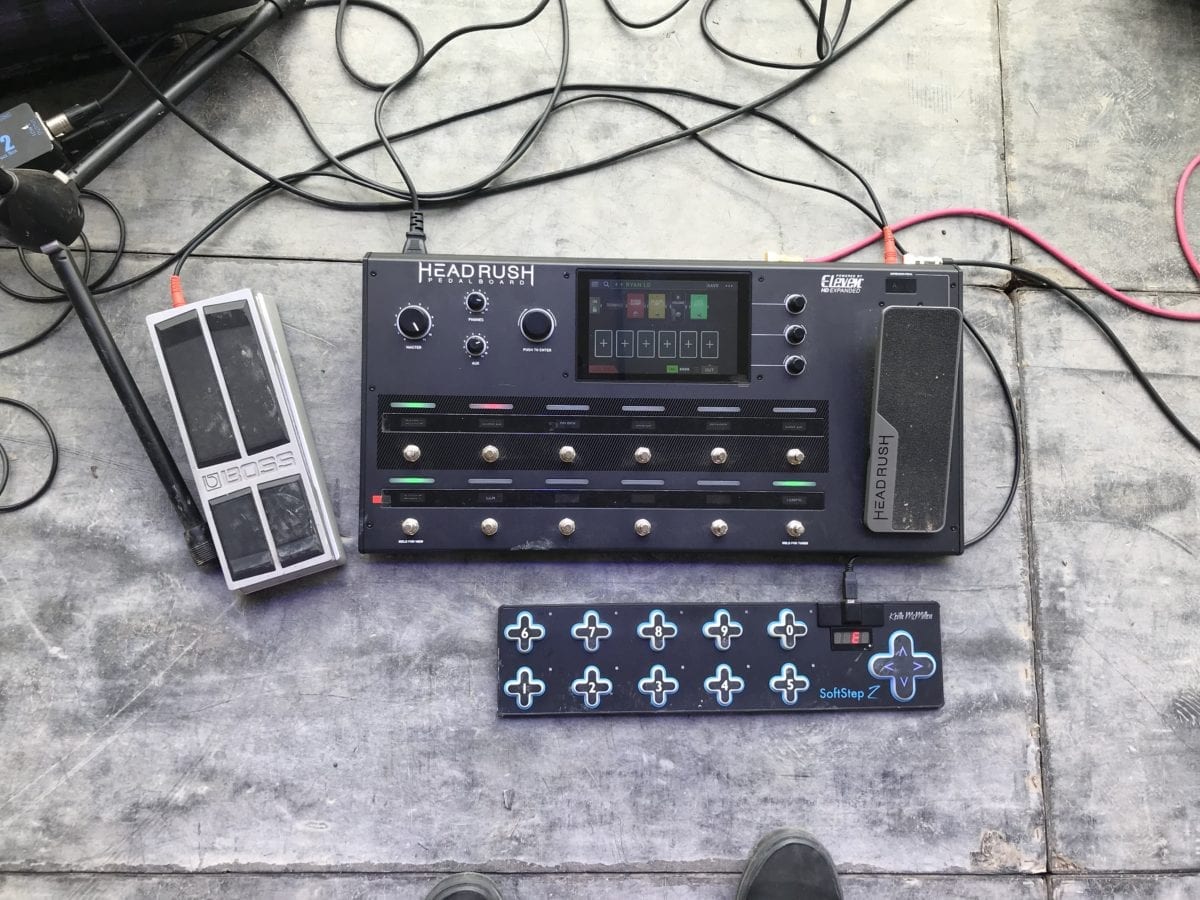
JL: What’s going through your mind when you’re deciding which effects to use?
RL: Well, the options are limitless with effects these days. So just like with writing, deciding on a tone is really about what sparks your emotion and hits your ear in that special way. But to give you a theoretical answer, a big part of my decision is the type of tune we’re playing. If it’s agreed we’re going for a certain vibe or sound, I’ll cater to that style. Such as if we say this part of the tune should be like a 70’s disco feel, I’ll probably be using some phaser with a clean Fender-ish type sound. Overall, I don’t go crazy on the effects, I find the simpler the better most of the time.
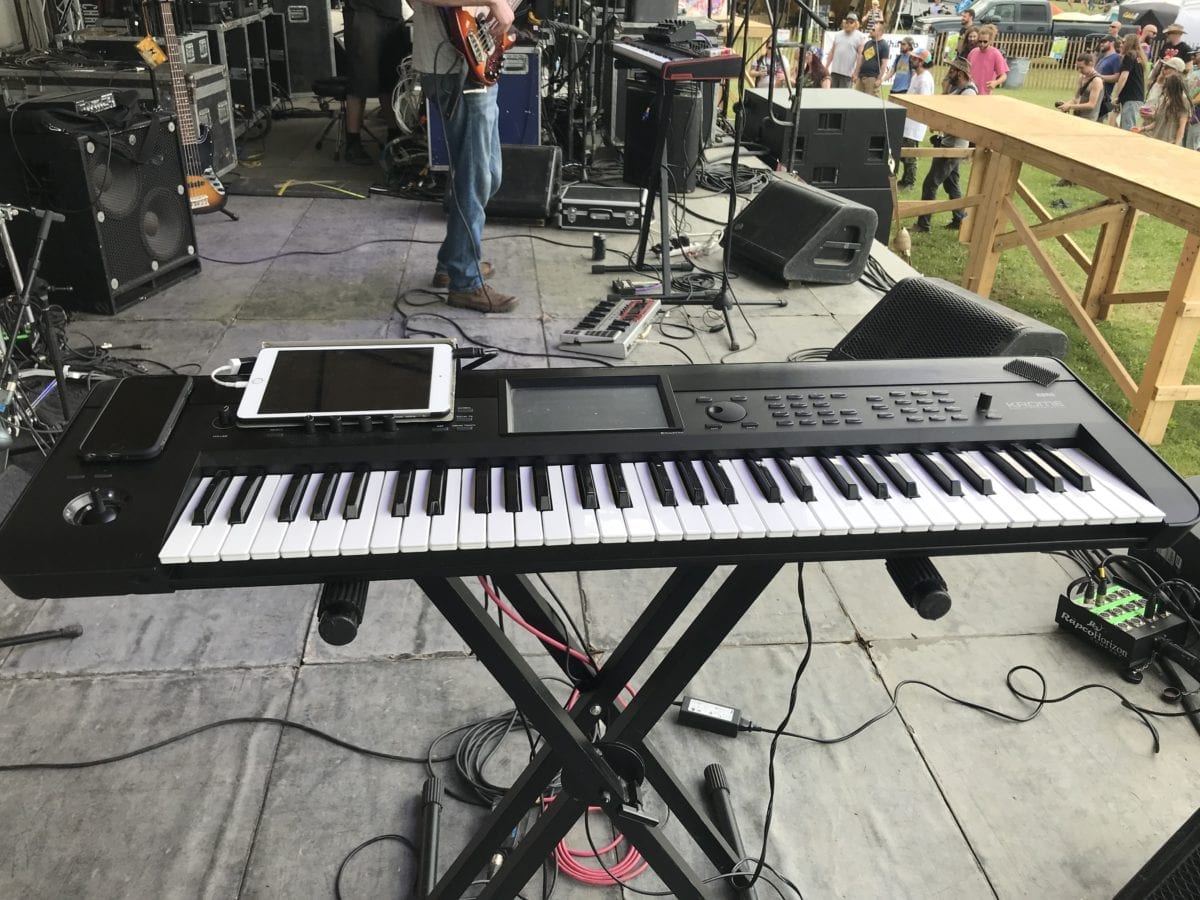
JL: Who are some of your inspirations as a player?
RL: Too many to name! So I’m going to go with my top 5. Frank Zappa – need I say more? Chick Corea – I was introduced to Chick’s music at a young age and it inspired me to learn jazz and fusion. Specifically, the later electric band stuff always blew me away. He was always one of those music god’s to me who could just play whatever line came in to his head at that moment with no hesitation. Sill on a quest for that level like the rest of us. Frank Gambale – My drummer buddy introduced me to Gambale when I was about 20 and my mouth hit the floor. How can somebody get away with playing bebop lines that fast with sweep picking and overdrive!! Steve Khan – I studied with Steve for 2 years. He’s probably one of the most underrated and unknown guitarists on the planet and he’s played with all the greats and been on tons of studio recordings. His chordal work puts most to shame which struck something in me. I love the chordal movement aspect of guitar and keyboard and it’s something I don’t see enough of unfortunately in today’s music. Slash – Yes it’s true, I was obsessed with Slash from age 16-18! I just wanted to be him, the playing, the image, he was the whole package. I transcribed a lot of his solos when I was younger, my favorite of all time being the ending solo on Paradise City, complete shreddage!
JL: Who are some of your favorite contemporaries on the scene?
RL: Kung Fu is my all time favorite of our scene, if you can call the rest of us contemporaries because they basically blow everyone out of the water! Dopapod, Mungion, The Southern Belle’s and The Fritz. My ears always tend to get caught by those bands who have their own unique style. There’s so many bands out there, great bands even, but some bands just have their own sound and you know it’s them playing instantly, which is the most important thing to me.
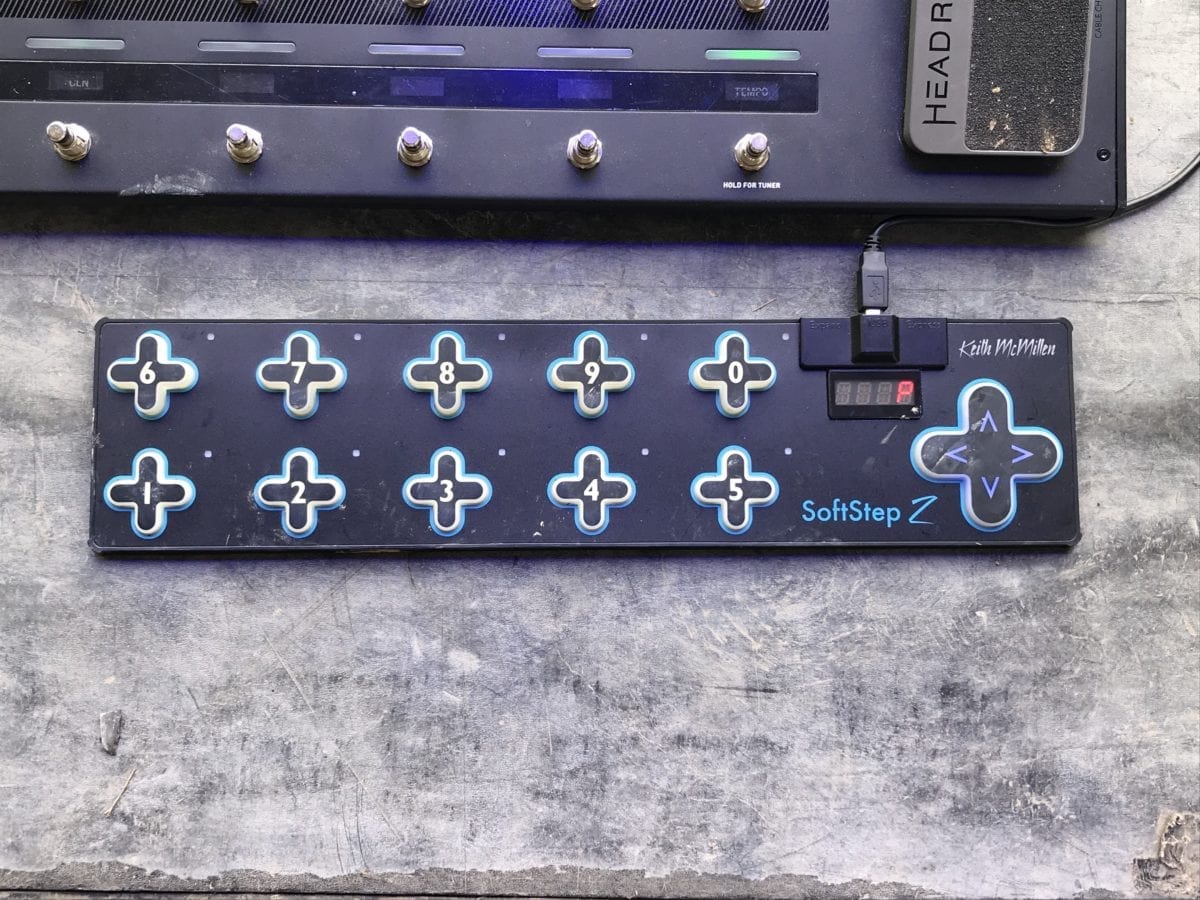
JL: You’re one of the only guitarists I’ve seen that uses a MIDI-trigger board to play chord samples live, what inspired you to start doing that?
RL: Well, necessity really. A power trio can be a thing of beauty. BUT, I’m very much in to chordal structure and movement and I always thought drums, bass, guitar and keys was the perfect instrumentation for my tastes. The thing about ShwizZ is that I play loud and sometimes very heavily distorted guitar sounds, so playing chord melody doesn’t quite give the effect desired. After our keys player and second guitarist left I said…well just how the hell am I gonna do this?! I didn’t want to play to a click or with backing tracks, so I thought, what if I can just do what some organ players and even bass players do with their feet using pedals, except polyphonic. It took a bit of cash and a lot of experimentation with different pedals and pieces of gear until I came across a handy dandy app that could do it all and be controlled by a simple trigger pedal that connected with a USB cable. I would simply record each chord I needed for that particular part or song and could save each song file as their own entity. It adds a little more switching of sounds between songs but it’s worth it to have the phantom 4th member laying down that bed of chords. Below is a link to a video I made that goes in to a bit more depth on how the system works.
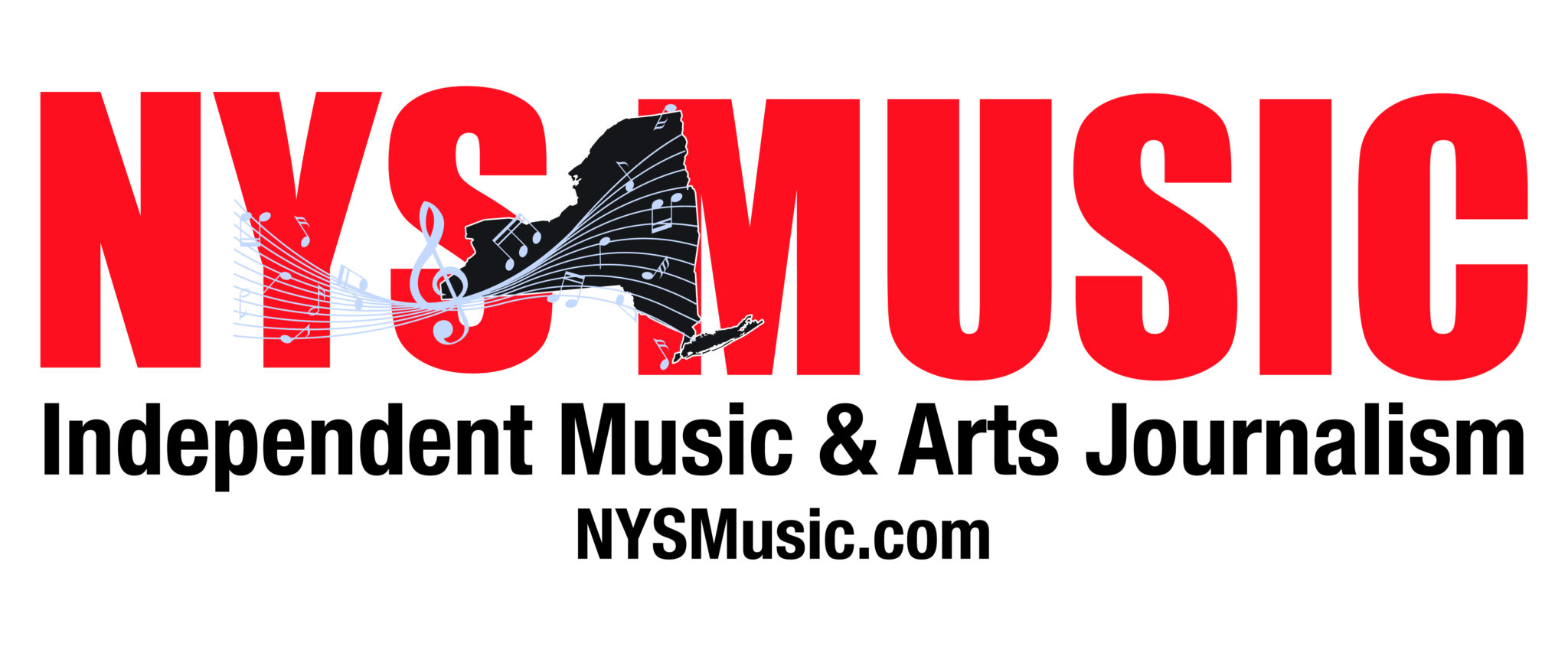

Comments are closed.